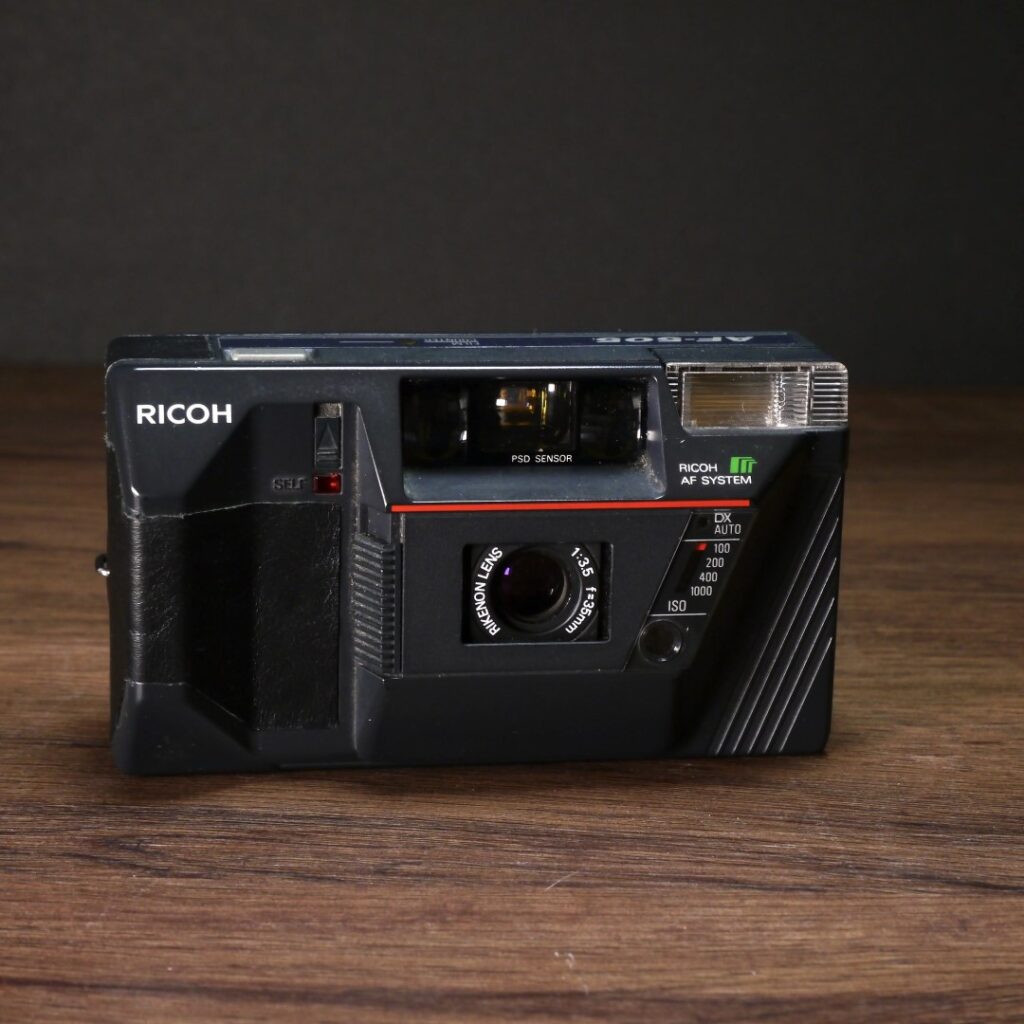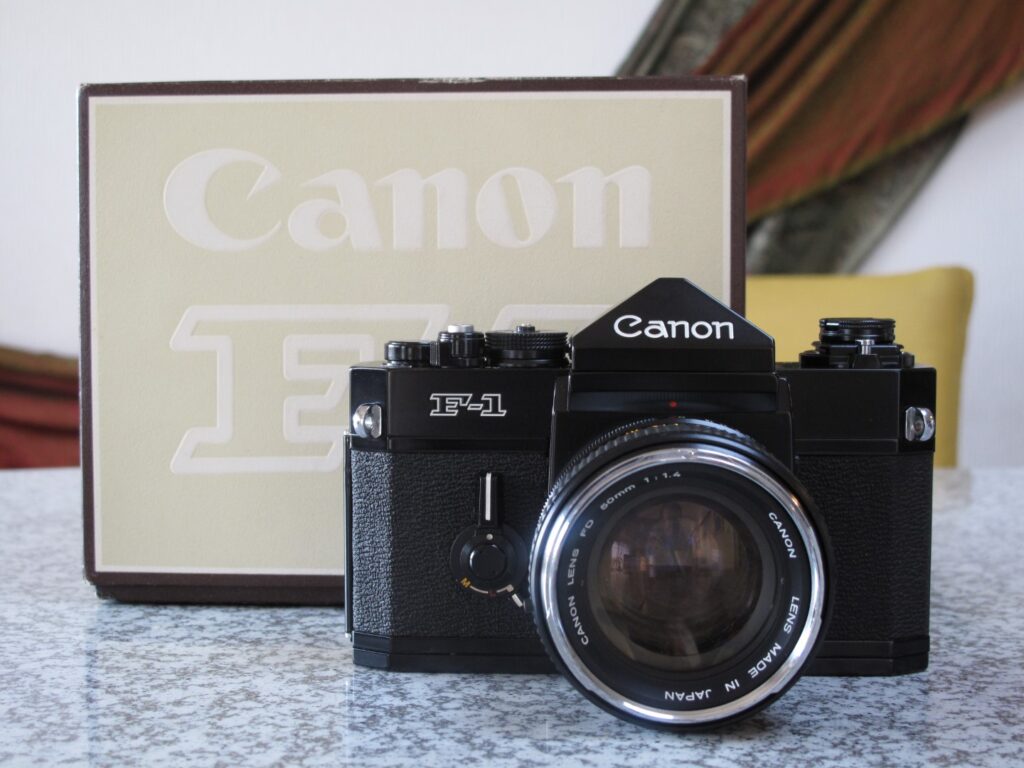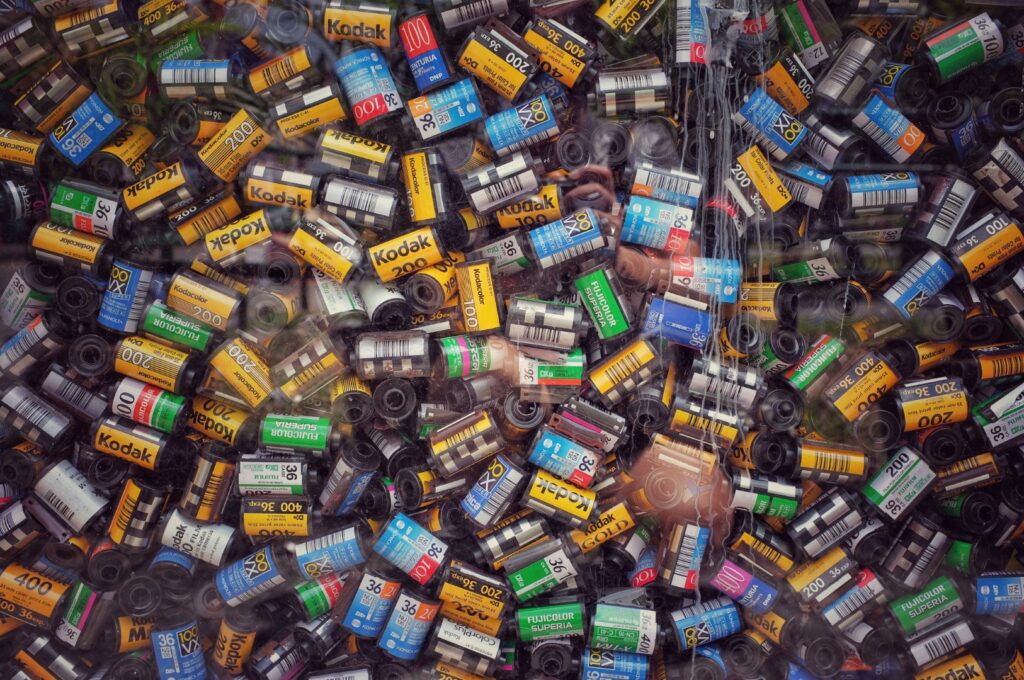Photography, as an art form, has grown significantly over the years. It has transcended from being a medium used to capture moments to a storytelling tool that evokes emotion. Each camera, with its unique features, contributes to this art in its own way. One such camera is the Ricoh AF-50.
The Ricoh AF-50, also known as the Myport ELLE and AF-70, is a point-and-shoot camera that was manufactured in the ’80s by the globally recognized Japanese company Ricoh. There was also a version with a databack, which was sold under the names AF-50D and AF-70D, respectively.
In its time, the Ricoh AF-50 carved out a niche for itself thanks to its impressive features, usability, and compact design. Despite the advancement of technology and the advent of digital photography, the AF-50 holds its own, especially for those who enjoy the classic experience of shooting with film.
In this comprehensive guide, we will delve deep into the Ricoh AF-50, examining its design, key features, and technical specifications. We will also touch on the type of film and batteries it requires, and discuss its overall reliability and durability.
Design and Aesthetics
Hailing from an era where design aesthetics and practicality went hand in hand, the Ricoh AF-50 boasts a sleek and compact design. This design sets it apart as a snapshot camera that is convenient to handle and easy to carry around. It measures 118 mm in width, 66 mm in height, and 45 mm in depth. Weighing in at a mere 235 grams (without batteries), the AF-50 was the lightest and smallest camera in its class when it was released.
The body of the Ricoh AF-50 is straightforward with minimal buttons, allowing for an intuitive photography experience even for beginners. Aesthetically, it is a nod to the classic point-and-shoot film cameras of the past, featuring a clean, rectangular shape with rounded edges and a compact built-in flash.
The design extends beyond the surface, with special editions like the AF-50D and AF-70D, which came with databacks. These databacks provided photographers with the ability to imprint dates on their photos—a helpful feature for archiving and categorizing images. Furthermore, the AF-60 (also known as the AF-606 in some markets) received a minor upgrade in its exterior design, reflecting the evolution of the camera’s design language.
Despite being decades old, the timeless design of the Ricoh AF-50 continues to charm photographers, appealing to those who appreciate the nostalgic simplicity of film cameras.
Key Features
One of the standout features of the Ricoh AF-50 is its Rikenon Lens. This 35mm f/3.5 lens, composed of 4 elements in 3 groups, provides sharp and contrast-rich images that are characteristic of this camera. It also supports a minimum focus distance of one meter, enabling users to capture subjects in a variety of settings.
The Ricoh AF-50 employs an autofocus system, relieving the user from manual focusing tasks and allowing them to concentrate on composing their shots. This single-point active autofocusing system operates effectively within a range from 1 meter to infinity. Any distance less than 1 meter would result in out-of-focus warning by a blinking LED.
Unlike more advanced cameras that offer a wide range of manual exposure settings, the Ricoh AF-50 leans towards simplicity. The camera automatically handles exposure settings, reading the film speed from the DX code (ISO 100 to ISO 1000). Alternatively, users can manually set the film speed themselves using a slider on the front, offering some level of control over the exposure.
The built-in flash in the Ricoh AF-50 is a useful feature for shooting in low-light conditions. It’s an automatic pop-up flash that kicks into action whenever the light is deemed insufficient for a proper exposure. Additionally, the camera features a self-timer, which allows the photographer to delay the shutter release, making it possible to include themselves in the shot or to avoid camera shake during slow shutter speeds.
The camera’s viewfinder is of the Albada type, a bright-frame viewfinder that offers 0.47x magnification and an 84% field of view. This type of viewfinder allows photographers to compose their shots accurately, providing an almost true-to-life preview of the scene.
Film and Battery Requirements
The Ricoh AF-50 is designed to use 35mm film, which continues to be a popular choice among photography enthusiasts for its versatility and accessibility. A wide range of films, from color films like Kodak Gold 200 to black and white films like Ilford HP5 Plus, can be used with the camera. This allows photographers to explore different aesthetics and moods in their imagery.
When it comes to power, the Ricoh AF-50 relies on two AA batteries. It’s a convenient choice as these batteries are widely available and affordable. Whether you’re traveling or shooting locally, it’s easy to carry spare batteries so you never run out of power.
While the battery life depends on how frequently you use the camera and its flash, users have generally reported a satisfactory performance. It’s worth noting that the camera does not support Nickel Cadmium batteries.
Suitability for Different Photographers
While the Ricoh AF-50 may not offer the extensive manual controls found in professional-grade cameras, it shines in its simplicity and ease of use. This makes it an excellent choice for beginners in the world of film photography. The camera’s straightforward design, automatic exposure control, and autofocus functionality mean that novice photographers can focus on framing their shots rather than getting lost in technical details.
For more experienced photographers, the Ricoh AF-50 presents an opportunity to revisit the charm of point-and-shoot film photography. Its dependable automatic features, combined with the distinct look and feel of 35mm film, can provide a refreshing break from digital photography. Moreover, the camera’s compact size makes it an attractive option for street photography or as a travel companion.
However, it’s important to note that this camera might not be the best choice for photographers seeking a high degree of manual control over their exposure settings or focus. It’s designed with convenience and ease of use in mind, and while this can be a significant advantage for some, it might be seen as a limitation by others.
Reliability, Durability and Known Issues
The Ricoh AF-50, like many Ricoh cameras, is known for its reliability and durability. Built with high-quality materials and Japanese precision, this camera was designed to withstand the rigors of daily use. Its compact size does not compromise its robustness, and many photographers have vouched for its longevity, with some cameras continuing to function well even after decades of use.
However, as with any vintage equipment, the condition of a Ricoh AF-50 will significantly depend on how it has been handled and maintained over the years. When buying a used AF-50, it’s recommended to check for any visible damage or defects and confirm that all functions are working correctly.
Despite its overall reliability, the Ricoh AF-50 does have some known issues that potential users should be aware of. The first is the limited ISO range—while the camera can read DX codes from ISO 100 to 1000, it may not provide the best results with film speeds outside this range.
Furthermore, the autofocus system, although innovative for its time, might not be as responsive or accurate as modern autofocus systems. It might struggle in low light situations or when trying to focus on subjects that are less than 1 meter away. In such cases, a warning LED will blink, but it’s essential to keep this limitation in mind while composing your shots.
Finally, while the automatic exposure system generally provides accurate results, it doesn’t offer any manual override. This might pose a challenge in complex lighting situations, where the camera’s automatic settings may not yield the desired results.
Technical Specifications
| Attribute | Specification |
|---|---|
| Type of Camera | Snapshot camera |
| Film Format | 35mm |
| Film Transport | Automatic |
| Picture Format | 24 mm x 36 mm |
| Focal Length | 35 mm |
| Biggest Aperture | f/3.5 |
| Minimum Focus Distance | 100 cm / 3.28 ft |
| Focus | Autofocus |
| Lens Design | 4 elements in 3 groups |
| Exposure Times | 1/500 s to 1/30 s |
| Light Meter | Yes |
| Exposure Modes | Program automatic |
| Manual Exposure Settings | No |
| Date Imprinting | Model variant |
| Flash | Built-in flash |
| Cable Release Thread | No |
| Self-timer | Yes |
| Power Supply | 2x AA batteries |
| Dimensions | 118 mm X 66 mm X 45 mm |
| Weight | 235 g (without batteries) |
Conclusion
The Ricoh AF-50 is a testament to the charm and timeless appeal of film photography. Its simplicity and reliability make it a great starting point for beginners, while more experienced photographers will appreciate the break from complexity, enabling them to revisit the basics. Despite a few limitations inherent in vintage gear, this compact point-and-shoot offers a fun and accessible way to capture moments on 35mm film. Its enduring quality ensures it remains a viable choice, even decades after its initial release. Happy shooting!



